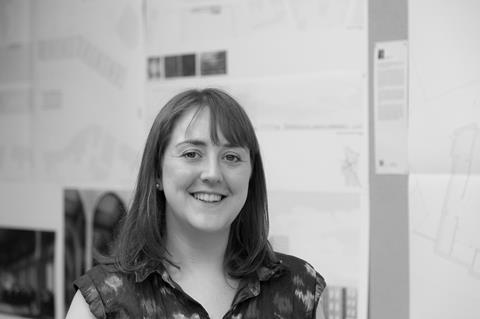The two professions need to learn to communicate if we are to build a better future, says Eleanor Jolliffe as she starts a new series of columns

Architecture is a powerfully expressive art form, one used throughout history by powerful patrons seeking to impose ideals on an uncertain world with the reassuring solidity and permanence of bricks and stone.
All seven wonders of the world are architectural and 80% of the Unesco world heritage list is cultural – created as opposed to natural. More often than not, these lauded sites were originally intended to impart the lasting authority of a particular worldview on to human consciousness.
The Great Wall of China not only marked the country’s borders but demonstrated the might and power of the Ming Dynasty. The Statue of Liberty represents American freedom, patriotism and opportunity. And the Acropolis stands as a universal symbol of classical spirit and civilisation – the beginnings of western democracy. Our own Stonehenge communicates its message less clearly now than when it was built, but still holds a certain fascination and weight of authority in both the landscape and the national consciousness.
Yet architecture is not only used as propaganda through its creation but also through its destruction. In recent years Isis has probably been the organisation employing cultural vandalism to most striking effect. But the Nazis also targeted built heritage in the so-called Baedeker raids, Henry VIII vandalised English churches when he broke from Rome in the 16th century and Mao Zedong’s Communist Party destroyed centuries of heritage during China’s Cultural Revolution (to name but a few).
Rowan Moore states rather beautifully in his book Why We Build: “Buildings are intermediaries in the reciprocation between the hopes and intentions of people, in the present and the past. They are the mineral interval between the thoughts and actions that make them and the thoughts and actions that inhabit them.”
Our reactions to buildings – or their destruction – suggests an inherent human understanding of this idea on a subconscious level. We are all prone to misplacing our hope in a building project as the solution to a complex problem. Of course a new high-speed rail link will not single-handedly revitalise the north of England any more than a really huge wall will solve America’s immigration challenges, but it doesn’t mean we don’t wish to believe it.
There is an inherent optimism to both architecture and politics
Politicians in particular have long been in thrall to the apparent ability of a building project to “solve” a social issue (PFI/Building Schools for the Future/Israel’s peace barrier/Trump’s wall/China’s new silk route).
But the inter-connectivity between politics and architecture goes far beyond literal bricks and mortar. Government policy – the planning laws and building regulations – directly impact the work architects are able to design and build. In turn, the impact of buildings on society can contribute to the next socio-political challenge or triumph.
The climate crisis is a good example. Architects Declare has (rightly) been enthusiastically embraced by the profession, but without government legislating for more sustainable development too many clients will be tempted by the value engineering opportunities to downgrade the fabric specification or omit renewables. In turn, the impact of a more sustainable built environment should contribute to slowing the rate of CO2 emissions and global warming.
Our current prime minister is at least as transfixed by the idea of a grand project as any politician past or present. The Conservative Party’s successful 2019 election manifesto made much of infrastructure investment in the future, of “levelling up” the north of England, and it has already approved HS2. Johnson’s tenure as London mayor was rife with ambitious and idealistic building projects. Meanwhile, the Grenfell inquiry, Northern Powerhouse rail, the Palace of Westminster refurbishment and the impact of the BBBBC report are likely to figure large in the future of this government.
The powerful patrons of our present and future are, if not actually politicians, often heavily influenced by political zeitgeist. There is an inherent optimism to both architecture and politics. Both focus on the future, on what could or should be. Both professions are never quite content to dwell in the present as it currently exists. However, perhaps to our mutual disadvantage, I don’t think we have mastered how to work well with each other.
I have spent the last six months considering the role of the architect in my columns. I’d like to spend the next six considering the intersection of architecture and politics. I can get too close to my individual projects and fail to see the wider impact of what I am drawing, or why I am drawing in the way I am.
I’d like to understand how architecture impacts on political life, and vice versa – and if that should be impacting on what and why I draw.
















4 Readers' comments